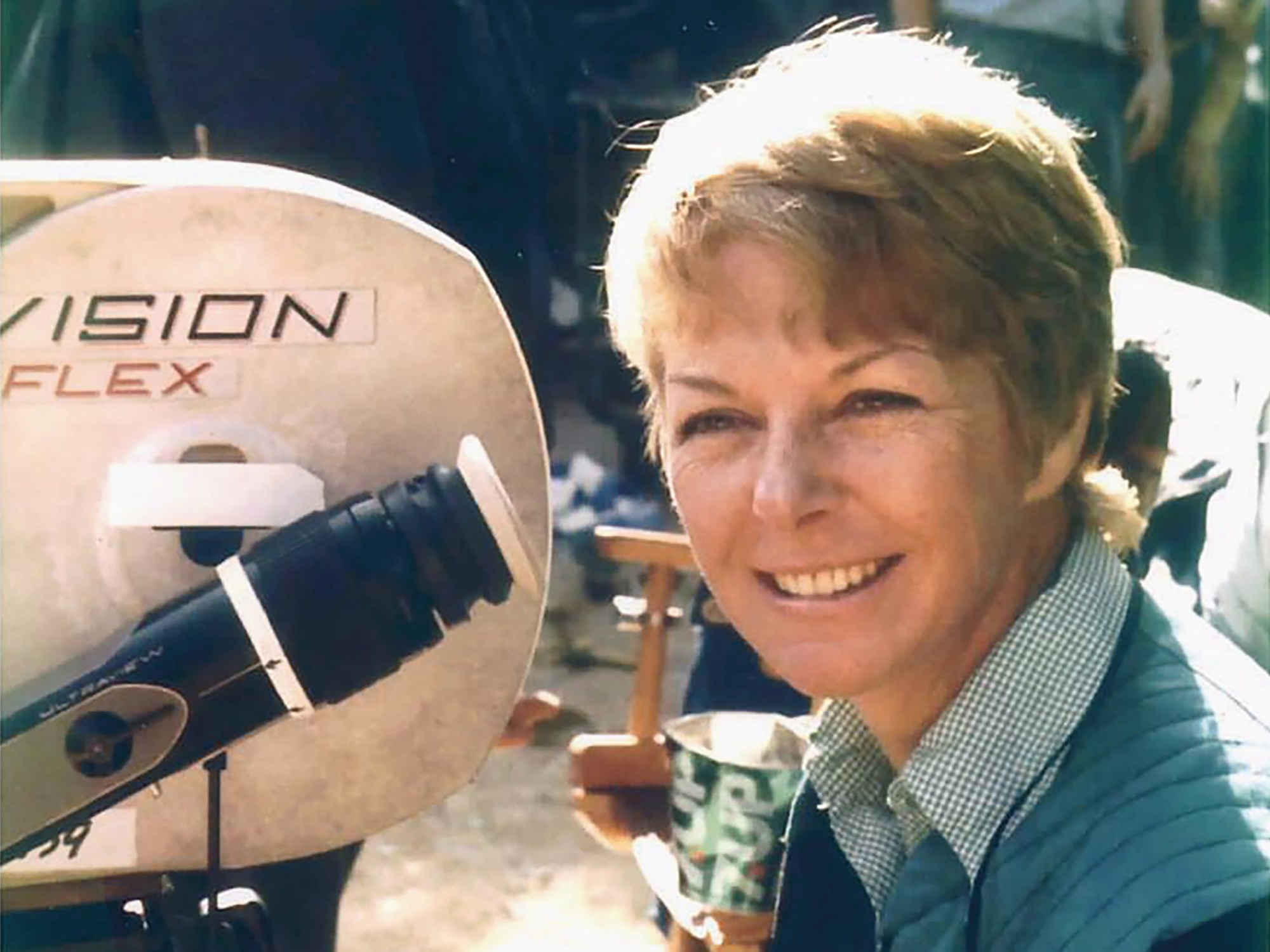
- Industry
Brianne Murphy, First Woman Director of Photography for a Major Studio Film
Geraldine Brianne Murphy was born in 1933 in London. While the family was living in the United Kingdom due to her father’s career, her parents were both middle-class Americans. At the outset of World War II, they moved back to America. Murphy dropped her first name, Geraldine, and went to Pembroke women’s college, now part of Brown University in Rhode Island. She wanted a career in acting and didn’t finish her degree, leaving in the early 1950s to attend the Neighborhood Playhouse in New York City. During the filming of On the Waterfront, she hung around the set to learn how movies were made, and eventually, she was asked to run errands for the Production Manager. She realized she’d have to create her own opportunities to get a real job in the film industry. She also worked as a trick rider with a rodeo for a season.
She gained some national publicity by crashing the Ringling Brothers and Barnum & Bailey Circus at Madison Square Garden in 1954, performing for the entire evening as a clown, although she was not hired to do so. This led to her getting a job as a still photographer with the traveling circus, which took her to Hollywood. There she started working for B-movie film director Jerry Warren. They fell in love and married, but later divorced.
Struggling to get jobs in a male-dominated industry, she often used “Brian” or “GB” on her resume to avoid revealing that she was a woman, figuring this was a way to at least get an interview. Her career started to take off in 1975 when Richard C. Glouner, a member of the American Society of Cinematographers, who had worked with her as a script supervisor in the past, had to leave the series Columbo and suggested she take over for him.
When she attempted to join her local ASC union branch in 1973, the union officer said she’d be allowed in “over his dead body.” When he later died, she went back to the union and was allowed to join — the first woman to do so, and the only woman member for 15 years. Eventually, she sat on its Executive Board.
In 1975, she won the cinematographer Emmy for Outstanding Individual Achievement in Children’s Programming for NBC’s Special Treat.
Murphy was the lead Director of Photography on many classic TV series, including 1974-1983 Little House on the Prairie, 1979-1986 Trapper John, 1988-1994 In the Heat of the Night.
She was nominated for four Emmys for Outstanding Cinematography — in 1978 for the NBC special Five Finger DiscountBreaking AwayThere Were Times, Dear — and she won for Highway to Heaven in 1985.
In 1980, Murphy became the first woman Director of Photography for a major studio picture, on Fatso, starring Dom DeLuise and directed by Anne Bancroft.
She won the 1982 “Scientific and Engineering” Academy Award for Stage Operations for the concept, design, and manufacture of the Mitchell Insert Systems, Inc. Camera Insert Car and Process Trailer, which she shared with Donald Schisler of MISI. This was a camera vehicle with safety features to protect technicians during the close-up shooting of moving cars.
Murphy also won the 1984 Women in Film Crystal Award for helping to expand the role of women in the entertainment industry, as well as the 1995 Women in Film Lucy Award for excellence and innovation in creative works that have enhanced the perception of women through the medium of television.
Murphy died on August 20, 2003, of brain cancer at age 70. She is widely recognized as the woman who brought women’s rights into the Hollywood film industry. She was a pioneering woman in that most difficult of Hollywood crafts for women to enter — cinematography — in which nepotism was a tradition for generations. Even as of 2019, the American Society of Cinematographers had 390 members, and only 18 were women. The mission statement of ASC’s Vision Committee is to work for change with the goal of being more inclusive. We must thank Brianne Murphy for helping to open the doors for women behind the camera.

